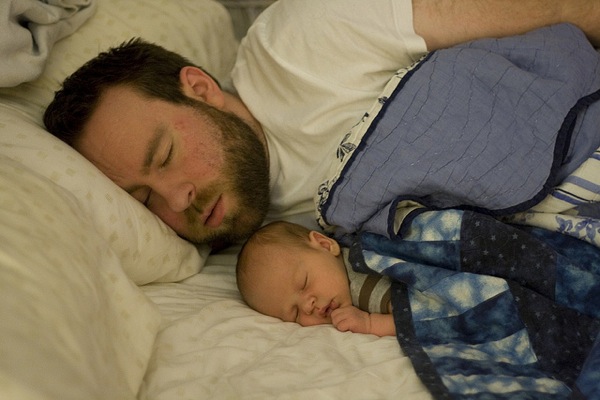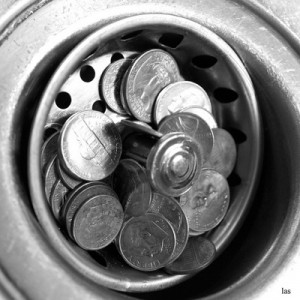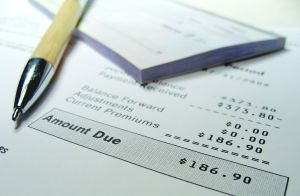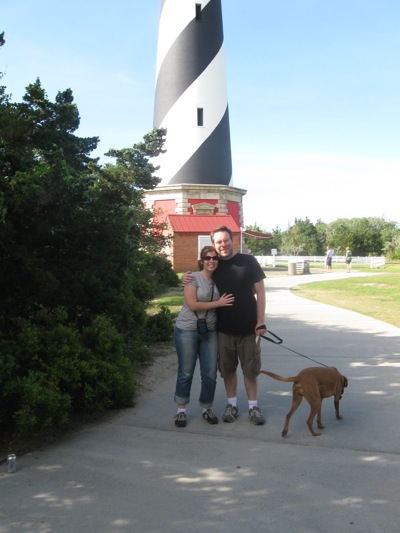One of the things I love most about our house is that it rests on about an acre of beautiful land. Unfortunately, we moved in a little late in the season to till and plant a garden, but you better believe I’ll have a mini farm back there next spring. Tony is looking forward to cutting down on the amount of grass he needs to cut, and I can’t wait to harvest fresh organic produce.
In the meantime, I put in a small raised herb and vegetable garden in the flower bed in front of the house. We planted red pepper, tomato, cucumber, sage, peppermint, parsley, oregano, rosemary, and basil. It’s my first garden, so I wanted to keep it small and manageable. But I have much bigger plans for the future.
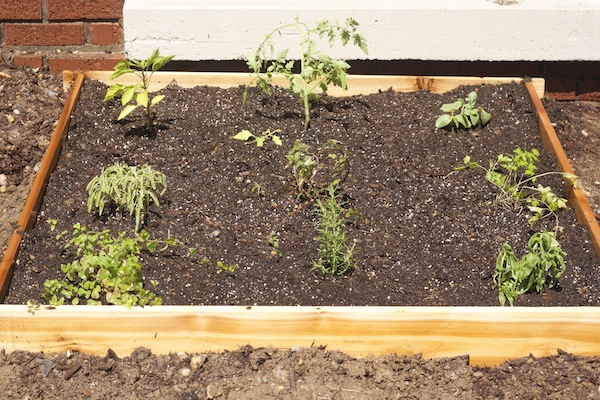
Everyone who has visited us has walked around the property and marveled at the plant life. Unfortunately, most of it is overgrown and woefully neglected. That’s one of the downsides of purchasing a renovated home. The seller bought it a year ago, completely renovated the interior, and let the acre of property grow unchecked. In some spots, our yard has turned into a rainforest.
Exhibit A: Piles and piles of yard waste behind the shed that’s dead underneath but sprouting plants and vines on top.
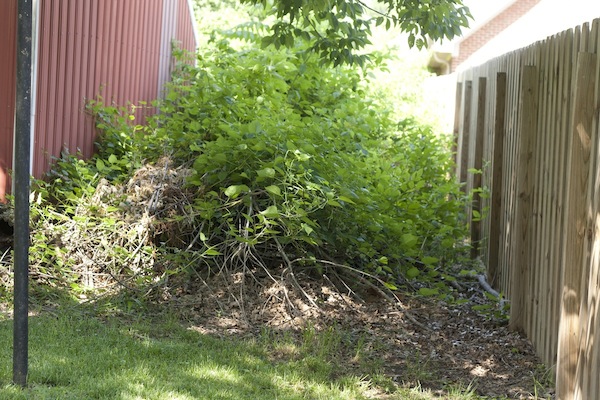
Exhibit B: Dead wood stacked next to the shed that we need to do something about before it attracts termites.
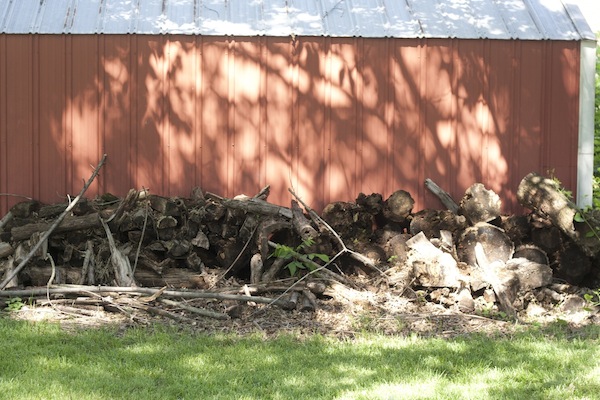
Exhibit C: Patch of weeds with flowers underneath. In the spring, there were daffodils here. I have no idea what other pretty plants would thrive if we could get rid of all this weedy growth.
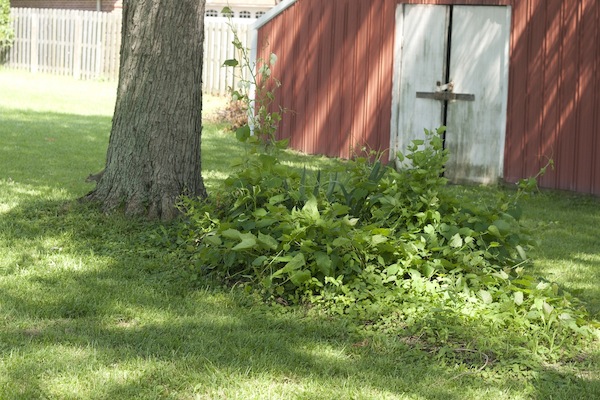 Exhibit D: Honeysuckle plant that may eventually overtake our house if we don’t get it under control soon.
Exhibit D: Honeysuckle plant that may eventually overtake our house if we don’t get it under control soon.
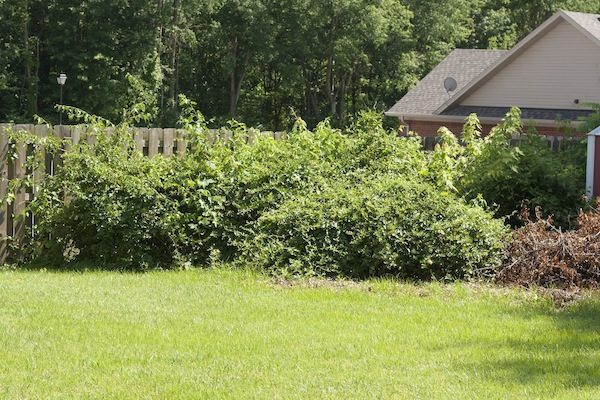 Exhibit E: Brambles and brush that’s possibly hiding a mulberry bush and who knows how many critters. Yikes.
Exhibit E: Brambles and brush that’s possibly hiding a mulberry bush and who knows how many critters. Yikes.
 One of the ambitious plans I discussed with my mom was the possibility of planting a mini orchard – a couple small apple trees and maybe a pear tree.
One of the ambitious plans I discussed with my mom was the possibility of planting a mini orchard – a couple small apple trees and maybe a pear tree.
Both my parents and my in-laws have come to visit the house since we moved in, and we walked the yard with both of them to get their help identifying some of the plant life. They all assumed the four trees with tiny fruit growing on them were crab apple trees. I decided I’d probably take them down to make room for my mini orchard eventually.
This weekend, though, I discovered that the tiny fruit on those trees has continued to grow, and they appear to be growing into real, honest-to-goodness apples.
Exhibit F: Mysterious fruit-bearing trees.
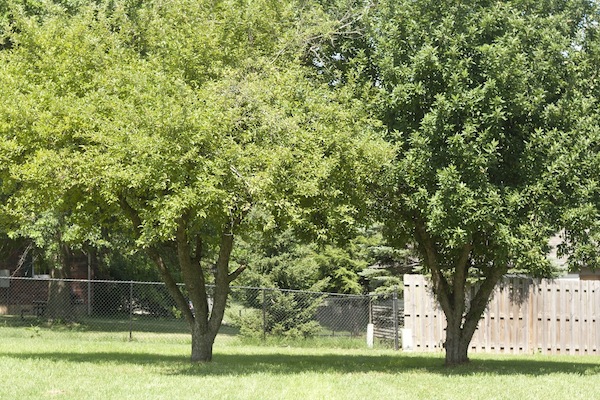
I can’t find a reliable way to tell if they’re true apples or crab apples. They don’t seem as round as crab apples. I cut into one, and it looked exactly like an apple on the inside. It also tasted like a tart apple. It was tart, but definitely sweet, not bitter. I haven’t been able to find out whether crab apples look and taste like apples, but they already look bigger than most of the crab apples I’ve seen in pictures.

One thing I’ve read in several places is that the only difference between crab apples and true apples is that crab apples are less than 2 inches in diameter. Some of the fruit on these trees is already 2 inches or maybe a little bigger, so I have high hopes.
 If they are apple trees, they’ve been allowed to grow much too tall (25 or 30 feet). They also haven’t been pruned in at least one growing season, possibly more, because the previous owners of our home before the renovation were an elderly couple that probably didn’t do too much yard work. It looks to me like it’s probably been several seasons since they were pruned.
If they are apple trees, they’ve been allowed to grow much too tall (25 or 30 feet). They also haven’t been pruned in at least one growing season, possibly more, because the previous owners of our home before the renovation were an elderly couple that probably didn’t do too much yard work. It looks to me like it’s probably been several seasons since they were pruned.
I’m not sure what kind of fruit the trees will yield this year. There is a ton of fruit on them, and I fear I’ll end up with a million tiny, too-tart apples (or crab apples) instead of a smaller number of plump, delicious apples. The trees are also full of dead limbs and look like they could possibly be sick in some places, so I need to do more research to determine if the fruit is even safe to eat.
I am feeling incredibly overwhelmed by all of the plant life we’ve inherited on this property. It’s an embarrassment of riches for this wanna-be gardener, but I feel like I’ve inherited too much for a beginner to take on at once.
Any tips on how I can save these giant apple trees – or advice on how I can determine if they’re real apple trees at all? I’ve grown unreasonably attached to the idea that they may be apple trees, and I’d like to rescue them if they are. I just have no idea how to do it.
Also, if you have any tips on what I can do about the rest of this hot mess, I’d love to hear them!





